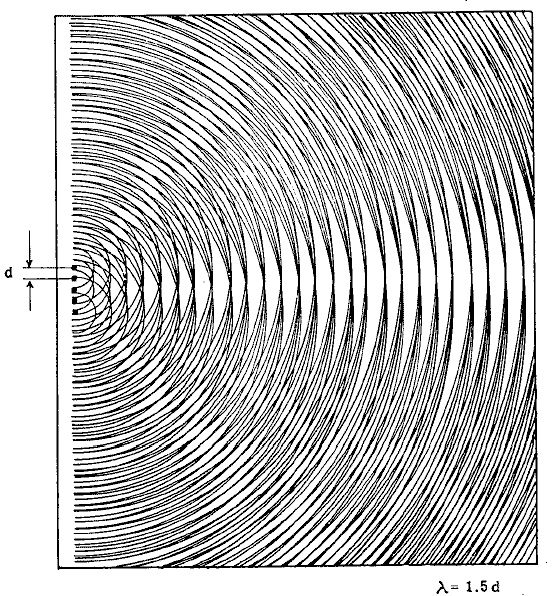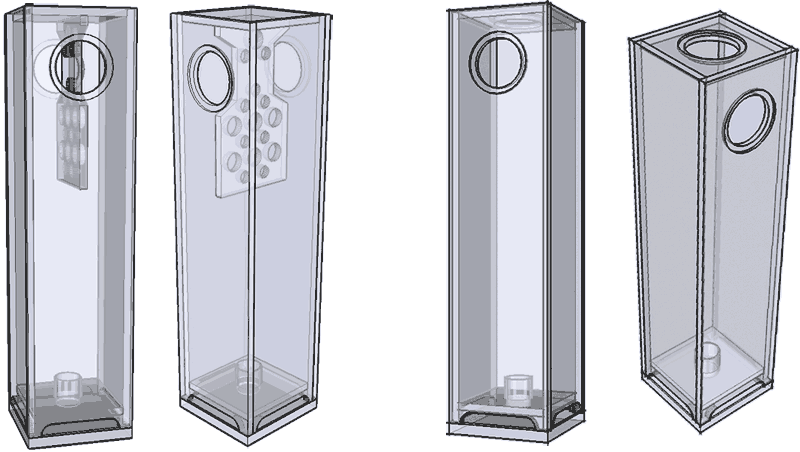Hi,
Im new to speaker design. I’m looking into using 2 identical full-range drivers on the same ported speaker box. I’ve seen a design where the 2nd driver just runs as a low frequency driver (using a filter). Would it be possible to have both drivers running full range, would that be advised/make sense? Thank you
Im new to speaker design. I’m looking into using 2 identical full-range drivers on the same ported speaker box. I’ve seen a design where the 2nd driver just runs as a low frequency driver (using a filter). Would it be possible to have both drivers running full range, would that be advised/make sense? Thank you
If they both run FR, and if you are not far enuff away, combing might be an issue.
http://www.planet10-hifi.com/downloads/Dual-Driver-Wiring.pdf
dave
http://www.planet10-hifi.com/downloads/Dual-Driver-Wiring.pdf
dave
Last edited:
Yes, using more than one at higher frequencies is best avoided unless you have a good reason to do it.
Using the second for bass (actually baffle compensation) is a good idea, as Dave shows. Use the lower circuit if you use a regular amplifier.
Using the second for bass (actually baffle compensation) is a good idea, as Dave shows. Use the lower circuit if you use a regular amplifier.
Well, how big are the drivers ?
I had 2 vertical x tangband 4" with 5" frames.
vertical sweet spot was maybe 4" at 10'.
I had 2 vertical x tangband 4" with 5" frames.
vertical sweet spot was maybe 4" at 10'.
Second driver can point sideways/upward/downward/backward even behind toward the first. An inductor helps too.
addendum: I've done this with three pairs of the same alnico 6x10 vintage drivers using both baffle-step low-pass inductor and side-firing mid units; high units open-baffle. Right this minute, I'm listening to 5&10 (five-and-dime) Markaudio MAOP5(gen1) OB in series with side-firing Alpair10(gen3), kind of bipole configuration. I rescued the damaged 5 yesterday from "idle-fishmarket"; the experiment sounds... jaw-dropping.

Last edited by a moderator:
and use a shunt capacitor (about 1.5 uf seems enough)
It really needs to be bigger than that. 1.5µF on an 8Ω driver will be above the midrange.
Using the nominal bafflestep -3dB as a staring point then: C = 1 / 2∏Rdriverfbs.
4Ω driver at 500 Hz is an 80µF cap.
And it should be below the quarter wavelength of the centre-to-centre of the drivers.
dave
Thanks a lot for your comments! In this case the capacitor works as a filter though correct? I was wondering whether both drivers can work full range.
I guess higher frequencies cancel out, is there a way to have the 2 drivers one on top of the other and aligned running full range without this creating any issues?
Not in this physical reality.
It can work insofar as you can (can) run twin small wideband drivers unfiltered, but how well it works it depends on the on / off axis response of the drivers, their spacing and the listening position relative to them. To put it another way: there will always be some destructive interference. It's just a question of how much / how bad it is. Without knowing what the drivers are, this is all pure speculation.
It can work insofar as you can (can) run twin small wideband drivers unfiltered, but how well it works it depends on the on / off axis response of the drivers, their spacing and the listening position relative to them. To put it another way: there will always be some destructive interference. It's just a question of how much / how bad it is. Without knowing what the drivers are, this is all pure speculation.
Sorry, this is the driver: https://www.iwistao.com/products/hi...for-monitor-speakers-tube-amplifier-diy-audio
- Home
- Loudspeakers
- Full Range
- Using 2 identical full-range drivers per speaker

